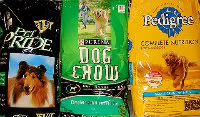Will the Dogs Eat the Dogfood?


But I urge readers to develop and implement processes that get at these market basics. As yourself tough questions:
Who needs what I’m selling? Exactly why? What are the gut-wrenching needs of my target market that are addressed uniquely by my product or service?
Once those basics are in place, get at higher levels of refinement:
How should I position my product or service? I.e., how should I communicate my offering in a word or two that will generate an immediate and positive association in the mind of the market? What exactly is my brand — and what’s the best way to express its meaning?
An electric vehicle company near Atlanta called Tomberlin has a sport buggy called the “Anvil.” In the very name of the product, they’ve positioned it as a heavy, low-tech object – normally stationary – which, when it happens to be in motion, usually brings to mind falling to earth, causing injury. To say the very least, I would have recommended against that. (You may think I’m making this up. I’m not; check it out here.)
Yet the process of deriving correct (or incorrect) positioning is seldom as clear-cut as this. Excellence in this space is critically important, but it’s not a straightforward task. In any case, if you’d like help on this — or any other aspect of marketing your clean energy product or service, please don’t hesitate to call or write. CONTACT US HERE.

Having been trained as an Industrial Designer, and having worked for some the best of the breed Design and Corporate Identity firms in the country – I am most aware of positioning and establishing a clear and consistent brand to the market place. If you take our corporate name “LiFeBATT” it says it all in a very elegent way since what we do is develop LiFeP04 Battery packs. Unfortunately some of our mfg. suppliers in Taiwan seem to feel they have to continually “tamper” with this and make their own way in the world by coming up with their own identities and Logo designs.
Ultimately by “cross-branding” they only create confusion and doubt in the minds of the customer. The Asian mindset is basically incapable of grasping the concept of Branding IMO. You can see this for yourself if you try to list all the famous Asian brands. You will end up with a very short list compared to a similar list of American famous brands.
All I can tell you as that this is not as easy as it looks. I think “The Anvil” is an excellent example; the guy who came up with that absolutely loves it!
I’ve thought long and hard about this question regarding the Tango ultra-narrow commuter vehicle. The question is has a very different answer if we had the $50M to $150M required to bring the price down to $44k or $29k respectively. However, at $150k, we have a limited, yet certainly existent market. Here is how I see it: The 10 qualifications for the ideal T600 customer.
Let me know if you can think of any, or how we might target them.
1. Can afford a second car costing over $120k
2. Has the legal right to lanesplit, as in California, Europe, and the orient.
3. Would be comfortable lane splitting. i.e., not shy about passing others that are stuck in traffic.
4. Have the need to lanesplit, as they spend too much time stuck in traffic, and it’s impractical to move closer to work.
5. Has the self-confidence to drive a car that may cause their peers to tease them, however, may also like to blow their minds with the performance.
6. Doesn’t have the bravery to ride a motorbike, or needs space to carry things (a portable locker), wants protection from rain and snow; climate control, doesn’t want “helmet hair,” or to have to don all of the protective gear.
7. Doesn’t mind being constantly photographed while driving, or crowds gathering when parked.
8. Benefits from perpendicular parking, as in San Francisco where you can park between any two houses in the 4-foot space between every-other driveway.
9. Would benefit from HOV lane access with a single occupant.
10. Drives less than 200 miles between charge opportunities.
Any thoughts?
Best wishes,
Rick
Rick: I like your analysis here — and of all the EV projects I follow, yours is at the top of my list re: concern about the dogs eating the dogfood at the price-point. I’ll call you to discuss this.
Readers wondering what I’m talking about can see this: http://2greenenergy.com/electric-vehicles-for-commuters/624/